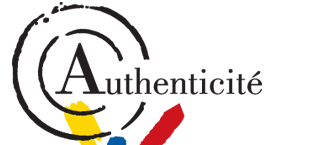 Valuation of a French parquetry bombe commode in our next auction
Valuation of a French parquetry bombe commode in our next auctionLe Floc'h auction house in Paris and Saint Cloud, in collaboration with our experts specialized in free valuation and free appraisal will auction a French parquetry bombe commode, Thursday 23rd of January in Saint Cloud.










Our teams in London and Paris are available to meet your needs whether you want to buy, sell or know the value of your works of art.
News releases

Do you see geometric shapes moving? Are you dizzy? Don’t worry; you simply look at a work by Vasarely, founder of the optical Art, major artist of the 20th century. Back to the secrets of this magician of abstraction and its place in the art market.
Victor Vasarely was born in Hungary in 1906. He arrived in Paris in 1931, already aware to abstraction and technical progress. His artistic research led him to become interested in the movement, with artists such as Alexander Calder, Julio Le Parc, Soto or Tinguely. These so-called kinetic artists seek to create the illusion of motion in a stationary work. The kinetic art then intersects many different practices, both motorized works as works altered by the intervention of the wind or water.

Vasarely develops in the 1950s a geometric abstract art based on visual ambiguity. In this optical art, or Op' art, the viewer is the engine of the work. The reliability of our vision is challenged through optical illusions. Vasarely uses uniform color units that will be repeated align to form geometric shapes that can be manipulated. It then emerges from the work a vibrating sensation, an illusion of relief or depth disorienting the viewer.

Vasarely died in 1997 and is successful in his lifetime. And for fifteen years, the psychedelic 1960s, playful and decorative, knows a renewed interest.
Defender of a democratic and accessible art, Vasarely favored multiple such as screen printing and lithography. There are now in abundance on the market at reasonable prices. Authentic print is trading between £200 and £800. Original works, such as drawings or paintings, less frequent, are negotiated between £2,000 and £8,000 for the former and up to £200,000 for the latter. Finally Vasarely experimented with various materials, collage, ceramics and tapestry works sought demanding collectors.
The art of Vasarely is a breakthrough and a fundamental art movement in the birth of contemporary art. The extent and variety of its production today can meet the wishful thinking of the artist; make it accessible to the greatest number.
Anaïs Couteau
Publish in collaboration with

Images:
1) S.V.V. Nice Riviera
2) S.V.V. Camard & Associés
3) S.V.V. Million & Associés


 +33 6 95 34 93 78
+33 6 95 34 93 78

